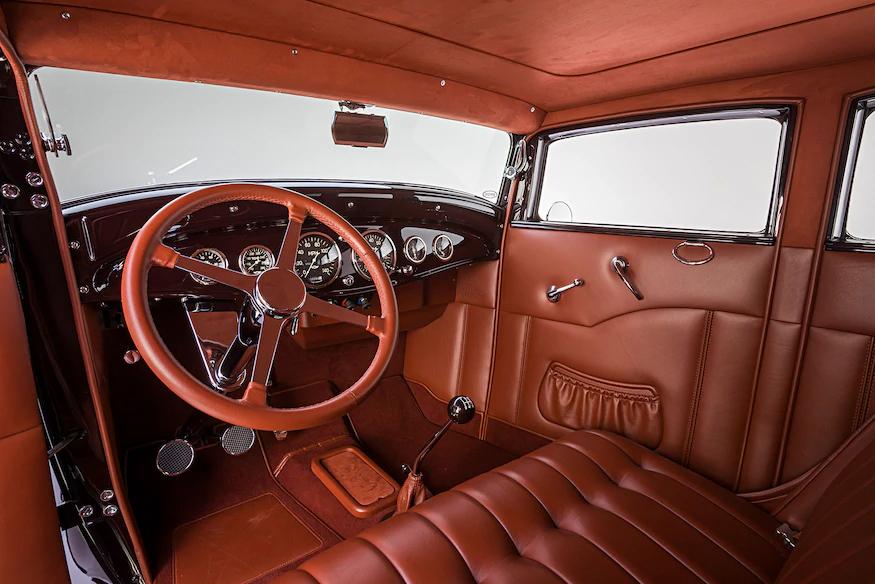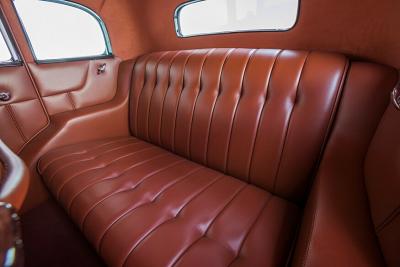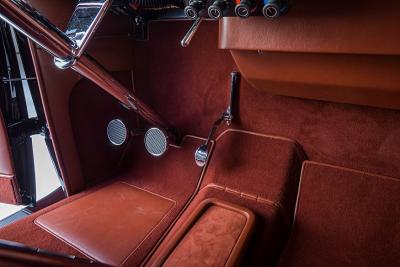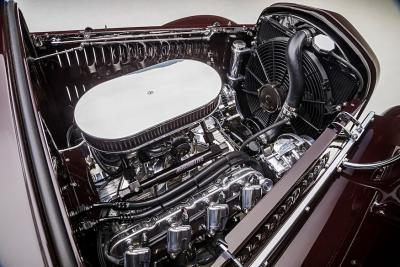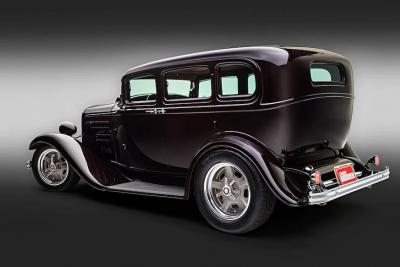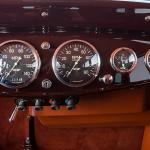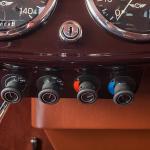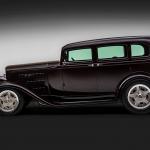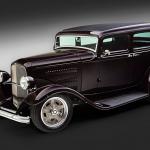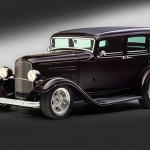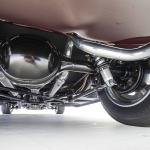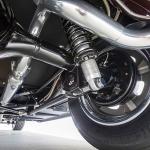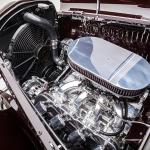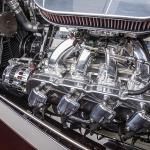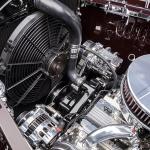The most repeated rule in street rodding is that there aren't any rules in street rodding. Whether that's true or not, there are definitely a few "general principles" that have been proven over time. Technical rules help prevent mechanical failures. Design rules help prevent empty trophy cases. A rule obeyed by most rodders, from backyard hobbyists to pro builders, involves teamwork. The most successful projects are almost always the result of teamwork—the fabricator, the mechanic, the painter, the upholsterer, the parts chaser, the friend who shows up with pizza at midnight—all working together toward the same goal.
Nick Testa and Roy Brizio have worked together on several of Testa's cars. This stunning chocolate brown 1932 Ford Fordor sedan is one of the most recent. Nick, like many rodders, had a cool car in high school, took a break from the hobby to start a business and a family, and got back into it as soon as he could. And he's collected a few cars in the last several years. About three years ago, he started looking for a 1932 Ford sedan. Tudors are the choice of a lot of enthusiasts, but Nick wanted a Fordor. "The Fordor is more appealing to me," he told us. "I like the look of the three windows on the side and the suicide doors. There's a little more going on. They're a little more menacing, like a gangster getaway car." He found the perfect raw material in Central California: a complete, bone-stock, Flathead-powered driver. It was exactly what he was looking for—or would be once it was finished by Roy Brizio with the modifications he wanted.
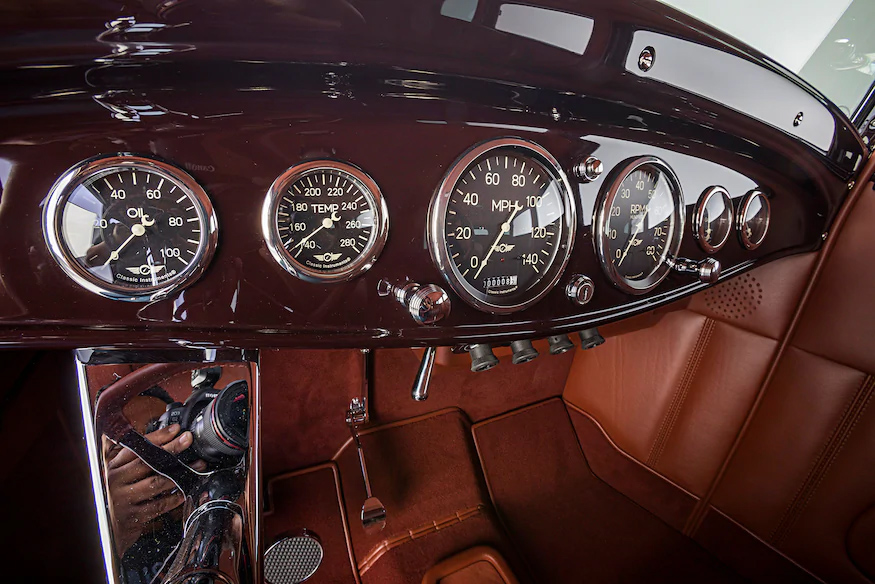
Nick said that the build didn't start with a predetermined concept in mind. Instead, the project evolved through a series of conversations and decisions over the course of the build. He knew he wanted a healthy chop out of the original Ford steel top. Four inches is ambitious but looks right. Three rows of small louvers in the Jack Hagemann three-piece aluminum hood was preferred over larger louvers, which would look more "street rod" than the car needed, and OTB Gear 682-J guide-style headlights have longer housings that are better suited for the full-fendered car. Other exterior elements include the Johnson's Hot Rod Shop 1932 Ford taillights, Bob Drake Reproductions bumpers, Dan Fink grille insert, and Vintique repro door handles.
Consistent with the teamwork idea, Roy Brizio frequently partners with Darryl Hollenbeck at Vintage Color Studio for final sheetmetal and paintwork. Nick wanted a solid, non-metallic color for the Fordor and was determined to avoid black, yellow, or red. He had seen a Ferrari painted a beautiful shade of rich brown that impressed him. The Ferrari owner brushed him off when Nick asked him about it, but the color stayed in his memory. Hollenbeck prepared sample panels and the result is a custom mix called Rosa Maroon. The chrome was handled by Sherm's Custom Plating in Sacramento, another regular contributor to Brizio projects.
The Fordor rides on boxed framerails from Total Cost Involved Engineering, with a TCI Engineering independent front suspension and rack-and-pinion steering. RideTech coilovers smooth out the ride at all corners, and TCI Engineering front and rear antiroll bars and a rear Panhard improve handling. The rear four-link locates a Currie 9-inch with 3.70:1 gears with limited slip, spinning Currie 31-spline axles. The TCI Engineering pedal assembly operates Wilwood 11-inch front disc brakes and 11-inch Currie drums, plumbed to a Wilwood master cylinder and proportioning valve.
Michelin Premier A/S tires, measuring 205/55R16 and 255/65R18, fill up the wheelwells. Combined with 16x5.5 and 18x7 Indy wheels and knockoff caps from E-T Wheels, the choice is an instant clue to the Fordor's performance personality.
We're sure the running Flathead that came with the Fordor found a good home, but Nick's plans called for something a little more aggressive. He wanted an LS3, bulletproof, leakproof, and carbureted. "It's getting harder hard to find guys who can build carbureted engines," he says, but he had no doubts about Don Hardy Race Engines in Floydada, Texas, another shop that Brizio has worked with in the past. Don Hardy, the founder of the shop, had been building engines and drag racers since the early '60s. Today his son, Don, keeps things going. The balanced and blueprinted 376-inch Chevy was built with a Don Hardy roller cam and Lunati valvetrain components. The Holley 770-cfm Street Avenger carb is sandwiched between an Edelbrock intake and a polished Billet Specialties air cleaner. An MSD ignition lights the fire. Exhaust is routed through Sanderson headers, ceramic-coated exhaust pipes, and Stainless Specialties mufflers. Cooling components include the Walker brass radiator, Vintage Air fan, and Edelbrock water pump. The TREMEC TKO five-speed—with a Modern Driveline clutch, flywheel, and Kevlar disc—delivers torque to the rearend. The carbureted LS3 "makes a lot of horsepower and torque and never chugs rolling away from the stop," Nick told us.
Upholsterer Sid Chavers in Santa Clara is one more regular collaborator with Roy Brizio. Chavers finished the sedan's original front bench seat, custom rear seats, and custom door panels in brown, pleated leather. Matching suede was used on the headliner and the floor was covered with Mercedes wool carpeting. A leather-grip four-spoke Sprint steering wheel from LimeWorks tops a Mullins steering column. A set of Classic Series gauges from Classic Instruments are the perfect choice to fill the factory dash. Vintage Air A/C and controls are mounted underneath.
Nick told us that one reason he worked with Roy Brizio on this car, and on other cars he owns, is Brizio's reputation for building drivers. In the short time it's been done, the sedan has been driven more than 2,500 miles. Whether you look at Nick's full-fendered Deuce Fordor and see a classy classic, an aggressive hot rod, a street-worthy cruiser, a menacing '30s-era gangster car, or all of the above, it looks ready to make a fast getaway.
